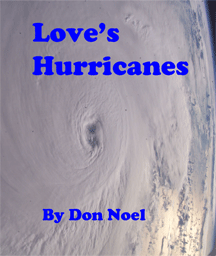I was eighteen years old when I first heard the admonitory buzz of a rattlesnake’s tail. In pre-dawn gloom, my arms full of a half-dozen shiny-clean buckets, I had just elbowed open the door of the dairy barn on a ranch in the California high desert. Though still a callow greenhorn, I recognized the sound instantly.
You will correctly infer from the buckets that this was long ago, when cows were milked by hand. One perched on a short stool, wiped bulging udders with warm wet washcloths, pinioned a bucket between one’s knees and tugged at teats with what soon – after a few weeks’ aching forearms – became an easy rhythm.
from the buckets that this was long ago, when cows were milked by hand. One perched on a short stool, wiped bulging udders with warm wet washcloths, pinioned a bucket between one’s knees and tugged at teats with what soon – after a few weeks’ aching forearms – became an easy rhythm.
I’d grown up in New Jersey, where I’d encountered no reptilian more feral than garter snakes. I’d arrived only days before at a valley ranch and college that looked west over its own mountain rim to the high palisades of the Sierra Nevada. Perennial snows on those peaks testified that their height wrung out the Pacific’s moisture, leaving our valley thirstily arid – and a rattler paradise.
Resisting the impulse to heave the buckets in the direction of that unique sound, I took a step back, my elbow groping for the light switch. My milking partner, a Utah native and a farm boy, was behind me. He turned on the lights, stepped around me, grabbed a long-handled shovel and dispatched the rattler as coolly as I might have swatted a fly.
“Now let’s get the cows,” he said, unperturbed. “Later, you can cut the rattles off the tail and send ‘em to your girlfriend. She’ll love ‘em.”
I am more than a little embarrassed to report that impressing girls back East with such an iconic cowboy gift turned out to be an irresistible, and surprisingly easy, diversion for two dozen late teenagers at this unusual school. Discussion of my dairy adventure – and admiration of my viperous valentine – led a ranch hand to explain to us where to get more.
We shared this isolated valley with only a highway maintenance station responsible for a road that ran arrow-straight most of its ten-mile length. Every evening at sundown, he said, rattlers stretched out on that all-but-deserted blacktop, absorbing a little extra heat against the forthcoming night’s desert cold.
In a later, more conservation-minded era, we might all have held back from what happened next: a massacre. In 1949, nothing restrained us.
Juraj, an East European diplomat’s son and a fellow student, had taken advantage of that era’s practice of getting new cars from Detroit to West Coast dealerships by paying college students a pittance to drive them out, allowing them a few days’ personal enjoyment before delivering them. The Buick convertible in his brief custody could easily do close to 90 on the two-lane asphalt road.
At dusk that evening, following the ranch hand’s wisdom, he turned the headlights off and rocketed down the road a mile or two. He then turned the lights on and idled back, stopping now and then so his carful of classmates could jump out to retrieve trophies. He repeated the exercise the next two nights with fresh complements of lovelorn males. The slaughter might have gone on, but the fearsome weapon was due at its destination dealership’s showroom.
While Juraj delivered the Buick, the rest of us collaborated in finding ways to cushion the rattles and mail them to our sweethearts; they clattered impressively even when shaken by hands instead of serpentine tails. A few of us learned how to dry and mount the skins on long shellacked boards as wall hangings.
One of the cowboys, a Paiute, was derisive of the automotive butchery. First, wanton destruction of natural things was foreign to his culture. Just as important, taking such high-speed mechanical advantage was unfair if not pusillanimous.
(Not that he opposed selective and purposeful takings. Instead of the conventional hemp lariat, he carried a sleek braided rawhide riata that could be thrown farther, with more accuracy. He claimed to have once settled that noose, from horseback, over the neck of a dozing mountain lion and then galloped away, dragging it to death and turning in the ears to claim a bounty put up by the county ranchers’ association.)
The manly way to kill rattlers, he asserted, was not with a motorized juggernaut on a dark highway, but rather at close range with the .30-30 rifle always slung on his saddle. All it took, he said, was a steady hand and timing; you could almost do it blindfolded. The snake would aim itself at the rifle, he said; one needed only to pull the trigger before it struck.
I never got to try that; it may have been a fiction to impress an ingenuous Easterner. But I can testify that our highway harvest that year made rattles, in a select circle, the love-token of the year.
And I saw enough rattlesnakes slithering through the sagebrush in the following few years to report confidently that we stopped before we’d created a crippling imbalance in nature’s desert ecology.
-End-
Published November 2023 by
The Museum of Americana Literary Magazine





